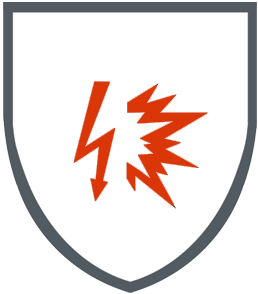-
CATALOGS
KEY ACCOUNTS
-
-
Click for more products.
No products were found.

Category 3 PPE: fatal risks.
This protection protects against the thermal effects of an electric arc.
An electric arc is a high-current, constant electrical discharge that generates intense heat.
An arc explosion poses a very serious (potentially fatal) hazard due to the risk of severe burns caused by intense heat.
An electric arc can also pose other serious hazards such as very bright light, a powerful pressure wave, noise and toxic fumes.
EN 61482 protection only covers the thermal effects of an electric arc and does not cover other hazards.
Protection for other parts of the body (face, head, eyes, hands, feet, etc.) must be ensured by wearing additional PPE that is compatible with the clothing and complies with the recommendations resulting from the risk analysis, which is the responsibility of the employer.
Certain design requirements must be met for this PPE: the jacket must overlap the trousers by at least 20 cm, all openings must be closed with a flap, no lapels are allowed, etc.
Tests are carried out on the fabric as well as on the accessories and seams; nothing must catch fire or melt (fastening systems are always tested to ensure that they still work).
The purpose of PPE is to act as a first line of defence against danger, and the wearer must be able to use this clothing to move away from danger and, if necessary, remove it quickly.
Two test methods measure the thermal arc performance of materials and clothing items intended for use as flame-resistant clothing for workers exposed to electric arcs.
Each method provides different information.
This refers to the arc power that the fire-resistant fabric can withstand.
Three performance tests: ATPV and/or EBT, ELIM
(The results are expressed in calories/cm², the higher the value, the better the protection).
A garment must provide minimum thermal protection against arcs, for which the ATPV and EBT values are at least 4 cal/cm2 and for which the ELIM is at least 3.2 cal/cm2.
Two performance levels:
The choice of test is left to the manufacturer. The constrained arc test EN 61482-1-2 is often used in Europe, while the open arc test EN 61482-1-1 is more commonly used in the USA.
At Molinel, we use the EN 61482-1-2 method (constrained arc test), with APC1 performance (i.e. 4 kA).
CATALOGS
KEY ACCOUNTS
Please sign in first.
Sign in
Create a free account to save loved items.
Sign in